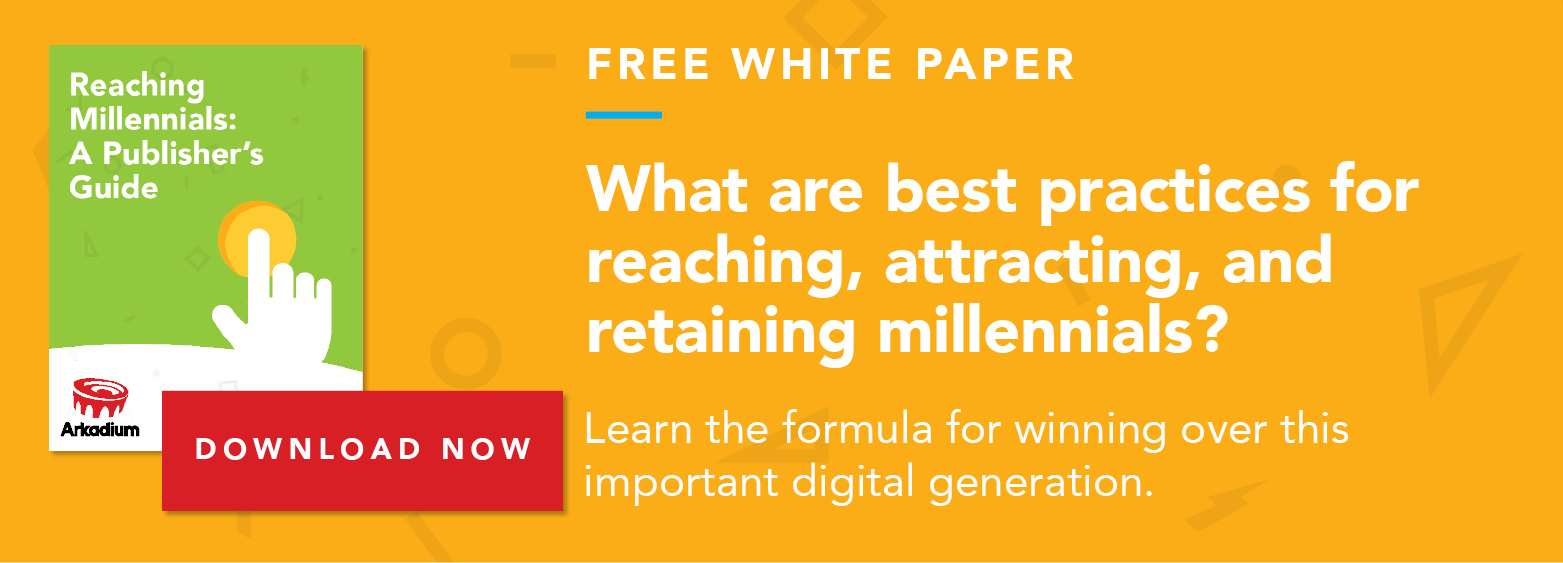Robot Journalism: A Publisher’s Guide

Robots are taking over publishing. Well, sort of.
In 2015, The Associated Press (AP) partnered with Automated Insights to automatically create news articles pertaining to quarterly earning reports. Soon after, various digital publishers began experimenting with so-called “robot journalism.”
Robot journalism, also known as automatic or AI journalism, is editorial content created by software. And it appears it’s here to stay.
Gartner, a research and advisory firm, anticipates “By 2018, 20% of business content will be authored by machines.”1
Here are some of robot journalism’s good and bad, and some insight on what the future may hold.
Increased Efficiency
The use of AI in the newsroom initially panicked many traditional journalists, who worried that the accuracy and speed of AI would eventually phase out their jobs. However, journalists quickly realized that working alongside machines only boosted their production capabilities.
As Lou Ferrara, AP vice president and managing editor explained, “Automation was never about replacing jobs. It has always been about how we can best use the resources we have in a rapidly changing landscape and how we harness technology to run the best journalism company in the world.”2
Indeed, harnessing AI technology has certainly empowered digital publishers to generate articles at a much faster rate.
“With automation, we now follow and produce quarterly earnings reports for 4,000 companies,” says Justin Myers from AP, the world’s first automation editor. “Previously we covered 400.”3
Additionally, human journalists who once spent an extensive amount of time compiling data, are now able to rely on robotic journalism to complete numerical and data heavy editorial.
As Helen Vogt, head of innovations at the Norwegian News Agency, says, “Most of the stuff that’s numbers based will be written by algorithms in the next few years, there’s no reason for it to be written by humans.”4
Near Human Results
In addition to quicker article generation, many readers have found that they could not tell the difference between an article written by a human or a robot.
Tech site New Scientist, noted, “A study published last month in Journalism Practice found that a small group of readers could not reliably discern whether a sports article was written by a human or a bot. Those assigned the automated article found it trustworthy and informative, albeit a bit boring.”5
Similarly, Regina Chua, who oversees innovation at Thomson Reuters says, “in a blind taste test, the machines actually came out as more readable than the humans.”
Concerns
Although digital publishers are making strides towards perfecting automated journalism, experimentation does not come without error.
Andreas Graefe, from Columbia University’s Tow Center for Digital Journalism, says, “Algorithms rely on data and assumptions, both of which are subject to biases and errors. As a result, algorithms could produce outcomes that were unexpected, unintended, and contain errors.”7
Fortunately, once a mistake is recognized, the algorithm can be altered and fixed by a human, ensuring the same mistake will never happen again. This very symbiotic checks-and-balances system between human and AI seems to highlight the future of robot journalism.
As Alexis Lloyd, New York Times’ R&D Lab creative director explained, “The future of computational journalism and automation will—and should—be a collaborative one, where you have machines and people working together in a very conversational way.”8
So maybe robots aren’t truly taking over, at least not yet.
Instead they are supporting, helping, and scaling the production of editorial, particularly data based content, in a timely manner. This mass scale is where the new tech truly shines and who knows, maybe that will one day be its biggest influence.
As Chua explained, “I think it may well be that in the future a machine will win [a Pulitzer] not so much for its written text, but by covering an important topic with five high quality articles and also 500,000 versions for different people.”9
1. Radcliffe, Damien. “The Upsides (and Downsides) of Automated Robot Journalism.” MediaShift. N.p., 07 July 2016. Web. 18 Jan. 2017.
2. Taibi, Catherine. “6 Months Later, AP’s Robot Journalism Is In Full Swing, And It’s Working.” The Huffington Post. TheHuffingtonPost.com, 30 Jan. 2015. Web. 18 Jan. 2017.
3. Holmes, Jonathan. “AI is already making inroads into journalism but could it win a Pulitzer?” The Guardian. Guardian News and Media, 03 Apr. 2016. Web. 18 Jan. 2017.
4. Radcliffe, Damien. “The Upsides (and Downsides) of Automated Robot Journalism.” MediaShift. N.p., 07 July 2016. Web. 18 Jan. 2017.
5. IBID.
6. Holmes, Jonathan. “AI is already making inroads into journalism but could it win a Pulitzer?” The Guardian. Guardian News and Media, 03 Apr. 2016. Web. 18 Jan. 2017.
7. Abu-Fadil, Magda. “Will Automation Upend Journalism?” The Huffington Post. TheHuffingtonPost.com, 25 Sept. 2016. Web. 18 Jan. 2017.
8. Roso, Steeve. “Get Used to Automation in Newsrooms.” News Literacy 2016. N.p., 4 Mar. 2016. Web. 18 Jan. 2017.
9. Holmes, Jonathan. “AI is already making inroads into journalism but could it win a Pulitzer?” The Guardian. Guardian News and Media, 03 Apr. 2016. Web. 18 Jan. 2017.


